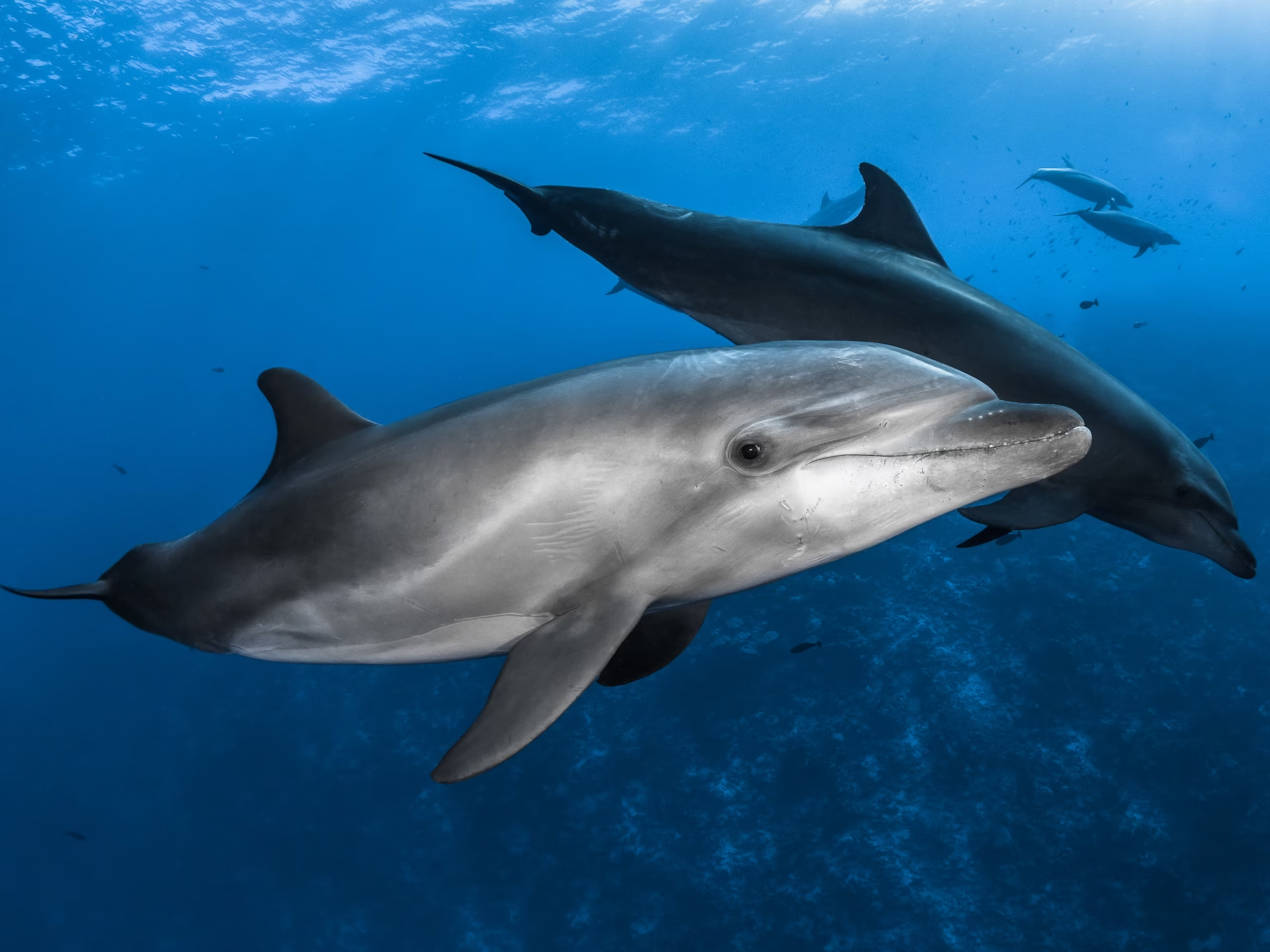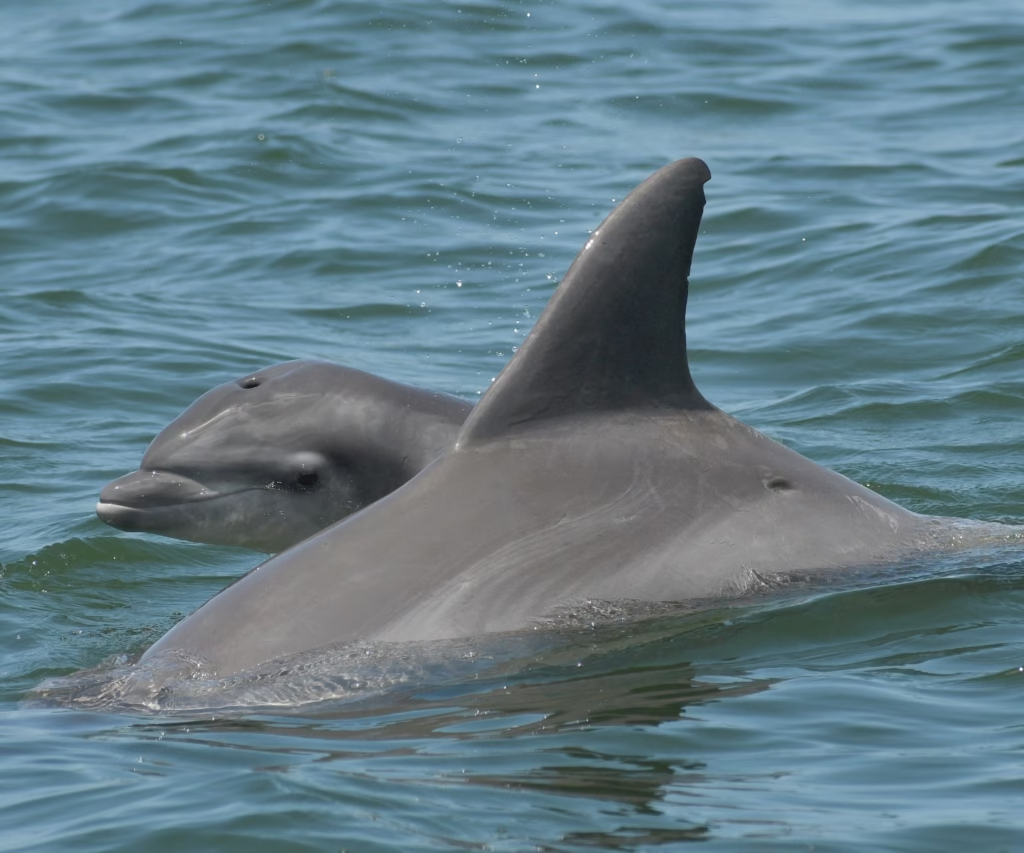“Do Florida Dolphins Have a Language? Scientists Are Closing In”

In the warm coastal waters of Florida’s Sarasota Bay, a pod of bottlenose dolphins swims, leaps, and whistles—seemingly in playful harmony. But for researchers who have spent decades tracking these dolphins, those sounds may be far more than just social chatter. A growing body of scientific evidence suggests that dolphins, particularly bottlenose dolphins in Florida, may be using a complex, learned system of communication—a possible language unlike anything previously understood in the animal kingdom.
Could these marine mammals be engaging in conversations, naming each other, or even expressing abstract ideas? The idea of dolphin language has fascinated both scientists and the public for generations, and now, new tools in bioacoustics, artificial intelligence, and animal behavior are bringing us closer to unlocking the secrets beneath the waves.
1. The Sarasota Bay Dolphin Project: The Longest Study of Wild Dolphins
The epicenter of dolphin communication research in Florida is the Sarasota Dolphin Research Program, founded in 1970 by Dr. Blair Irvine and now led by scientists from the Chicago Zoological Society in partnership with Mote Marine Laboratory.
Key Facts:
- It’s the longest-running study of wild dolphins in the world.
- Researchers have tracked multiple generations of over 170 resident bottlenose dolphins.
- The project has amassed decades of acoustic recordings, behavioral observations, and genetic data.
These longitudinal insights allow scientists to track individual dolphins across their lifespan, including how and when they produce certain sounds—and how others respond.

2. The Basics of Dolphin Communication: More Than Just Whistles
Known Dolphin Sounds Include:
- Whistles: Used for social bonding, coordination, and contact.
- Clicks: Mainly for echolocation—used like sonar to “see” their environment.
- Burst-pulsed sounds: Used in high-arousal situations, such as fighting or mating.
But it’s the signature whistles that have drawn the most attention.
3. Signature Whistles: Dolphin “Names”?
In the 1990s, research led by Dr. Vincent Janik and Dr. Laela Sayigh revealed that each dolphin develops a unique whistle in infancy—a vocal pattern they use throughout life. This signature whistle functions much like a name, identifying individuals.
Key Findings:
- Dolphins respond to their own signature whistles when played back through underwater speakers.
- Mothers and calves exchange whistles continuously, possibly reinforcing bonds.
- Dolphins may copy the whistles of close companions, possibly mimicking to call them.
This discovery led to speculation that dolphins refer to one another vocally, and may be using their whistles in referential or symbolic ways—a key feature of human language.
4. Syntax and Structure: Could Dolphins Have Grammar?
Some recent studies suggest dolphin communication may be more structured than previously thought.
- Whistle sequences sometimes follow predictable patterns.
- Dolphins may combine sounds in consistent ways—possibly reflecting syntax or “rules” of use.
- In captive settings, dolphins have demonstrated the ability to understand artificial languages, symbols, and even basic grammar rules in human-designed tasks.
However, translating dolphin “language” into human terms remains enormously difficult. Dolphins communicate using ultrasonic frequencies, multi-dimensional sounds, and body language—far more complex than just speech.

5. AI and Machine Learning: A New Era of Dolphin Decoding
A major breakthrough in recent years has come from the use of artificial intelligence to analyze large volumes of dolphin vocalizations.
Projects like:
- Project CETI (Cetacean Translation Initiative): Aims to decode sperm whale communication using AI, linguistics, and robotics.
- The Dolphin Communication Project and Wild Dolphin Project: Focus on recording and interpreting dolphin exchanges in natural environments.
In Florida, researchers are using machine learning algorithms to:
- Cluster similar whistle types.
- Detect patterns in vocal interactions.
- Correlate vocalizations with behaviors (e.g., feeding, playing, mating).
These tools may help distinguish random noise from meaningful communication, a key step in evaluating if dolphins have a language with semantic content.
6. Cultural Transmission and Learned Behavior
Beyond sound, Florida dolphins demonstrate cultural traits that suggest complex learning and social structure.
Examples:
- Tool use: Dolphins in other regions (like Shark Bay, Australia) use marine sponges as tools, a behavior taught from mother to calf.
- In Florida, dolphins show localized foraging techniques and social structures unique to the Sarasota population.
The presence of learned behaviors and social traditions strengthens the argument for advanced cognitive communication systems—including language-like traits.
7. What Language Really Means—and What Dolphins Might Have
To determine whether dolphins truly have a “language,” scientists look for traits that include:
| Language Trait | Do Dolphins Show It? |
|---|---|
| Discreteness | Yes – unique, distinguishable sounds |
| Arbitrariness | Possibly – signature whistles as names |
| Semanticity | Under study – do whistles refer to objects/actions? |
| Displacement | Unclear – can they talk about things not present? |
| Productivity (grammar) | Hypothetical – some evidence of sound combinations |
| Learnability & Transmission | Yes – calves learn from mothers and peers |
While no definitive proof exists that dolphins possess a fully symbolic, syntactic language like humans, they are among the most promising non-human communicators.
8. Ethical Questions and Future Exploration
If dolphins do have language, the implications are profound:
- How should we treat creatures capable of symbolic thought?
- What responsibilities do we have in marine conservation and captivity ethics?
- Could interspecies communication become a reality?
Researchers emphasize that even if dolphin communication doesn’t meet every linguistic criterion, its complexity, social utility, and evolutionary significance are worthy of profound respect and continued study.

Conclusion: Closer Than Ever to Understanding
Florida’s dolphins have been “speaking” all along. With the help of cutting-edge technology, long-term field studies, and interdisciplinary collaboration, humans are finally beginning to listen—and maybe even understand.
While we may not yet know if dolphins truly have a language, every click, whistle, and chirp brings us one step closer to decoding the deep, alien conversations happening just beneath the waves.




